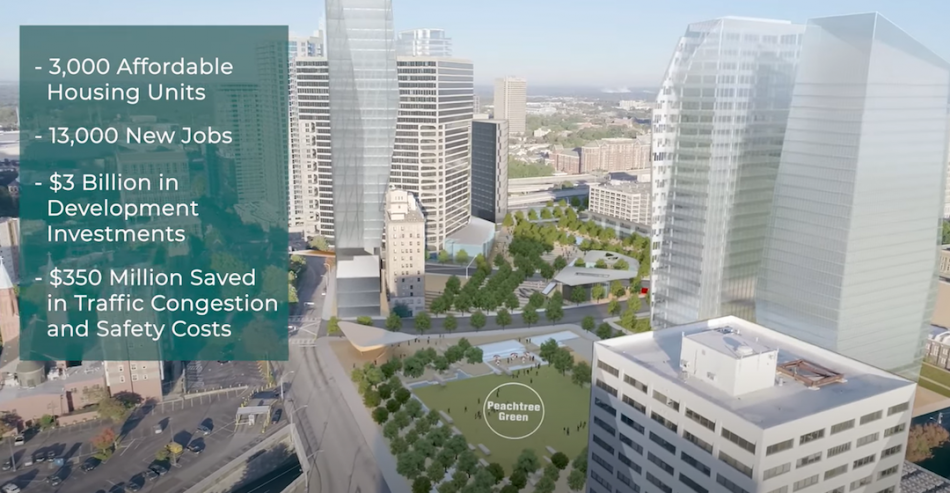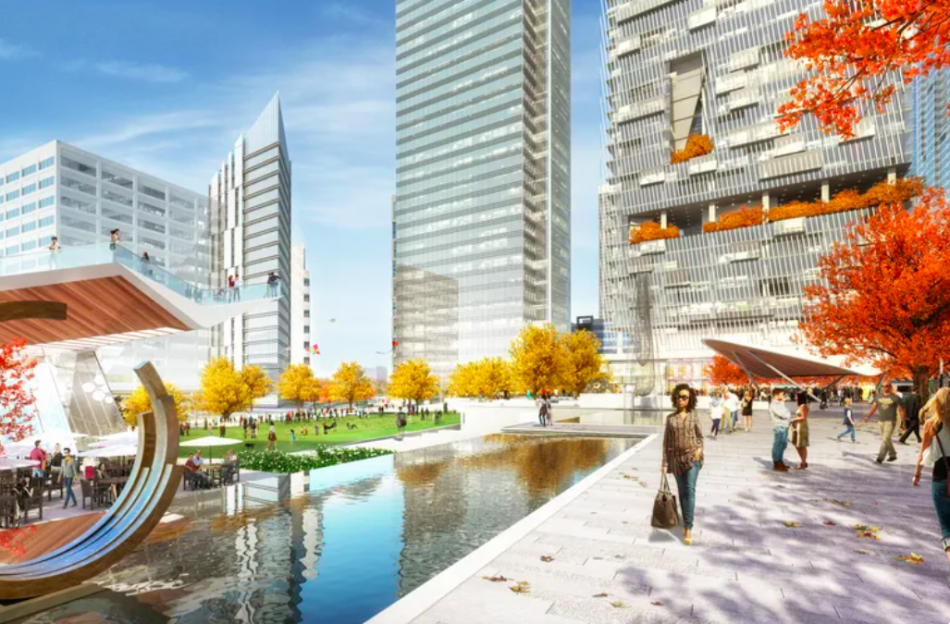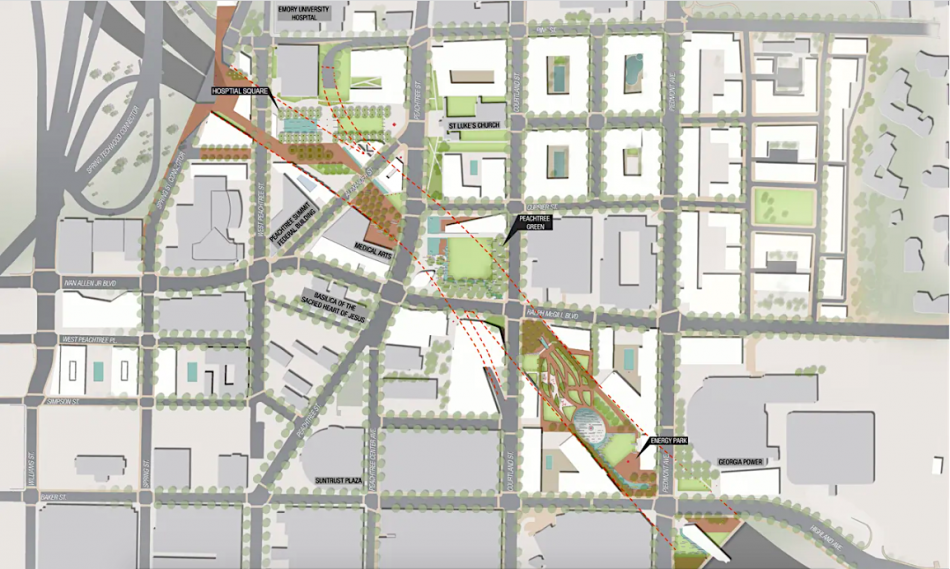If there was any doubt where Atlanta’s 61st mayor stands on whether downtown’s highway-capping park concept is a sound use of energy and resources, that should be erased now.
In a new promo video for the Stitch project, narrator Mayor Andre Dickens forecasts that “soon, empty [downtown] parking lots and underutilized properties will be transformed into a vibrant and diverse community … that’s due in large part to the funding and support provided by the Inflation Reduction Act and the Infrastructure Investment and Jobs Act.”
The one-minute and 50-second video was shared with government leaders from across the U.S. during National Infrastructure Week in Washington, D.C., which began May 15, according to Central Atlanta Progress.
Dickens nods to support from the Biden Administration, along with early funding for Stitch planning secured by Georgia legislators Nikema Williams, Raphael Warnock, and Jon Ossoff.
The video includes eye-popping statistical projections for what the 3/4th-mile highway-capping greenspace is expected to generate, according to Dickens: roughly 3,000 new affordable housing units and 13,000 jobs. The park would also be infused with $3 billion in private developer investments, according to the promo.
Dickens describes the 14-acre Stitch as “a once-in-a-generation project” that would link people with multiple transportation modes.
“Atlanta is on the cusp of something great,” says the mayor. “As we grow, it remains more important than ever to continue bringing our communities together. Despite its name, the Connector cuts our city center into two, separating Atlantans from essential opportunities and each other… Now is the time for change.”
 Favorable numbers put together as part of the Stitch's recent pitch during National Infrastructure Week in Washington, D.C. Central Atlanta Progress/YouTube
Favorable numbers put together as part of the Stitch's recent pitch during National Infrastructure Week in Washington, D.C. Central Atlanta Progress/YouTube
Williams’ office in February announced the Stitch had been awarded one of the country’s first Reconnecting Communities Pilot Program grants from the U.S. Department of Transportation, totaling $1.1 million. Williams, who authored the Reconnecting Communities legislation, also secured a $1.16 million federal Community Project Funding Grant for the Stitch in early 2022.
As of November, the city, CAP, Atlanta Downtown Improvement District, and federal government heads had channeled about $15 million toward making the Stitch a reality. Other potential funding sources could include philanthropy and mechanisms such as tax allocation districts.
The cost for all Stitch sections has bumped up to $713 million, as project backers revealed last year, though that’s likely to change as engineering and design phases are modified and finalized in coming years.
CAP, the Stitch’s spearhead since inception, estimates the project could take a decade to fully construct and open over the Connector, near the point where downtown’s northern blocks meet Midtown.
Construction could begin by 2026, with an estimated completion at the earliest in 2032, per CAP officials.
 The Stitch’s “Peachtree Green” section would reconnect a downtown street grid and create an active greenspace, setting the stage for park-oriented, high-rise development. Thestitchatl.com
The Stitch’s “Peachtree Green” section would reconnect a downtown street grid and create an active greenspace, setting the stage for park-oriented, high-rise development. Thestitchatl.com
The project launched a website—thestitchatl.com—last year that includes information and visuals on the site’s historical context, the latest renderings, and a digestible FAQ section for how the manmade 14 acres would mend “a torn fabric” that’s existed since freeways sliced downtown nearly 70 years ago.
The Stitch, if fully realized, would be nearly as large as 16-acre Rodney Cook Sr. Park in Vine City, on the flipside of downtown. It’s one of three major highway-capping proposals in Atlanta currently in fundraising mode. The others are Buckhead’s HUB404 and the largest (but now smaller) Midtown Connector concept.
...
Follow us on social media:
• Downtown news, discussion (Urbanize Atlanta)







